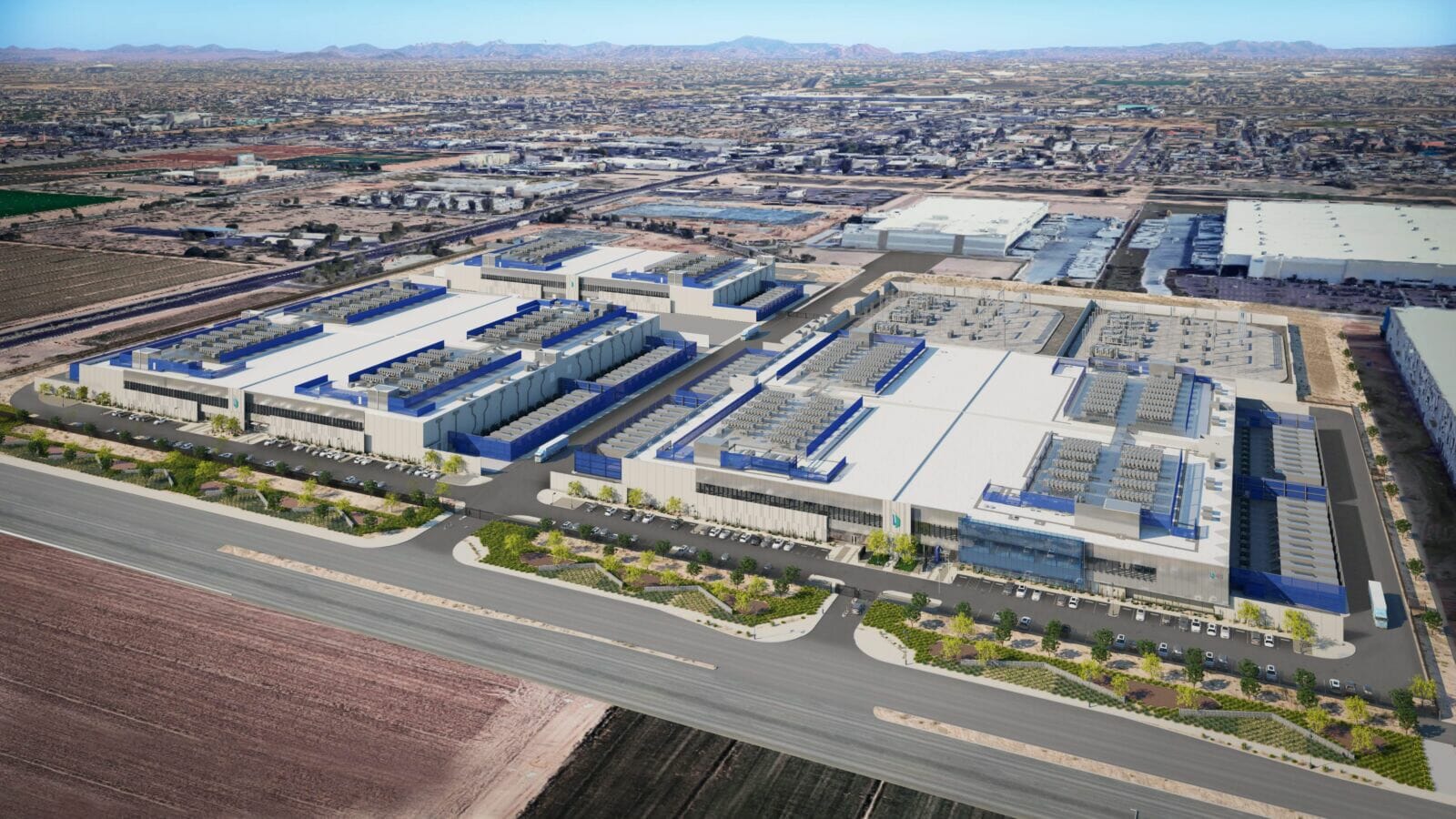Cushman & Wakefield’s Americas Data Center Update found the Phoenix data center market displayed remarkable momentum and continued its ongoing ascent as a central hub for data centers on the West Coast.
MORE NEWS: Phoenix moves ahead of Silicon Valley in data center supply
In the first half of 2024, the Phoenix market saw 126MW of absorption, further solidifying its position in the elite rank of gigawatt-plus markets. Despite a slight slowdown in absorption due to supply constraints, the demand remains robust with tight vacancy at 1.3%.
As interest in the deployment of AI and cloud data centers increased in the first half of 2024, both established and emerging markets continued to grow, with absorption looking to exceed 2023’s record levels. Power availability remains the key concern, with developers scouring wide geographic areas for sizeable power options within the next two to three years. Even as supply pipelines grow, demand has continued to race ahead—leading to ever lower vacancy rates across the board.
In the latter half of 2023, absorption rates have either matched or surpassed leasing velocity. As with last year, a significant portion of this absorption consisted of preleased and built-to-suit projects, which accounted for 78% of all delivered projects. Most of this capacity was allocated for hyperscalers, facilitating cloud expansion and supporting both computation and storage for artificial intelligence deployments across various sectors.
Power availability is the greatest consideration for data center developers, with operators seeking two- to three-year delivery times but many encountering over five-year timelines for future power in multiple markets. Where utility providers have been unable to provide power sooner, certain operators have collaborated with power companies to deliver substations, transmission lines or to source micro-grid power. Many of these agreements are now being signed directly with third party energy generation developers with wind, solar, battery storage, natural gas and even geothermal developments moving quickly across markets. Going forward, we expect to see more operators continue to acquire large acreage, high power capacity sites in even more rural markets. Additionally, some operators will begin to work to secure power along longer timelines.
AI data centers are increasingly becoming a significant part of both hyperscale and colocation development pipelines. Plans for AI training facilities primarily focus on large, rural sites that are less dependent on low latency, while AI inference facilities are typically located near major cloud regions. While hyperscalers remain the primary end users in this space, there are several GPU cloud providers entering the user arena with interest in hyperscale-level capacity across the region.
Phoenix data center market overview
After reaching a record level of absorption of 411MW in 2022, the Phoenix market displayed remarkable momentum in 2023, approaching nearly 600MW. Slightly more of this absorption occurred in the first half of the year as take-up leveled to 269MW in the second half. This is likely a result of limitations on the delivery of supply as opposed to any slowing of demand. Phoenix has now entered the elite rank of gigawatt-plus markets and continues to thrive, as hyperscalers and colocation providers actively assess land sites across Mesa, Chandler, Goodyear, Glendale, and Avondale.
All major U.S. hyperscalers either have an established foothold in the market or extensive plans to grow. Market colocation veterans, as well as new entrants, continue to acquire land and break ground on new developments. As established brands such as QTS, Vantage Data Centers and Aligned Data Centers continued their development pipelines, companies such as Prime Data Centers and Edged Energy are making their initial moves into the market.
Phoenix’s location offers a distinct advantage by providing low latency connectivity from major tech metros on the West Coast to fast-growing markets in the Southwest. With tight vacancy and many options when it comes to providers, Phoenix has quickly become the central data center hub along the West Coast. The established power grid in the market remains predominantly natural gas (52%) and nuclear (45%), however, renewable energy is becoming increasingly prevalent as more private solar developers continue to begin construction on new solar farms around the state. Google recently signed a 480MW PPA agreement that will power its Mesa campus with renewable energy.
Despite growing solar developments in surrounding areas, power—as with many markets—is becoming more constricted as competition grows for larger data center deals in the Phoenix area. Water usage has also become a critical issue for the market, as high ambient temperatures and demand for more intensive AI/HPC workloads have generally increased the requirements for more intensive water-cooling technologies. State and local governments have begun to ask data center operators to limit their water usage and have incentivized the deployment of air-cooling technologies. The confluence of these factors will likely lead to fewer high rack density deployments in the Phoenix market as compared to others, though this will likely do little to dampen the overall positive momentum of the market.
Phoenix data center market developments
• In June, Compass Datacenters closed on a 121-acre site in El Mirage, AZ where it is planning a new campus. The site is expected to host three, single-story, 208,000 sf buildings with each structure providing 36MW of capacity. This will be the company’s second campus in the Phoenix market.
• Also in El Mirage, Microsoft acquired two land parcels from Dermody Properties. Combined, the parcels span about 282 acres. Prior to the sale, Dermody gained approval to build three data centers totalling 750,000 sf. Microsoft plans to use the site to support ongoing construction of a nearby data center.
• QTS has filed plans to develop a new data center campus in Maricopa County. At full buildout, the campus is anticipated to boast roughly 3 msf and 750MW of capacity spread across 16 buildings.
• Data center master plan developer Tract Group moved forward with purchasing a new 2,069-acre site for data center development in Buckeye, AZ. This occurred after the developer withdrew its previous application to develop a a smaller 1,400-acre site in Maricopa County. The site will house as many as 20M sf across 40 data center buildings, with Tract working with the local utility to source 1.8GW to power the expansive site.
• Google has filed plans to expand its Mesa campus. Phase two will include a 280,000 sf data center while construction on the first building continues to progress and is expected to launch Q3 2025. The company also recently signed a roughly 480MW renewable energy PPA with NextEra to power the campus. A combination of solar, wind and battery storage will be utilized to provide the power.




